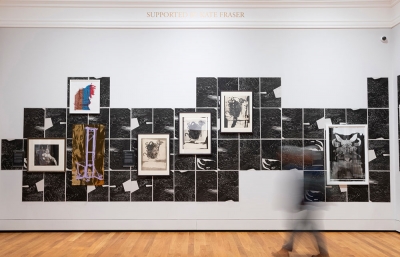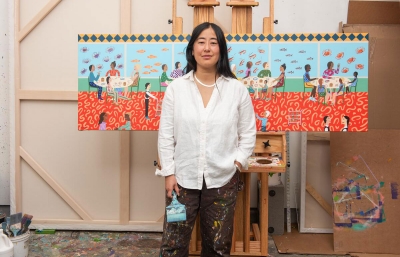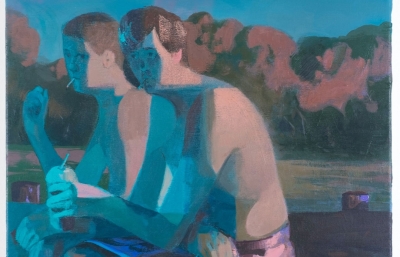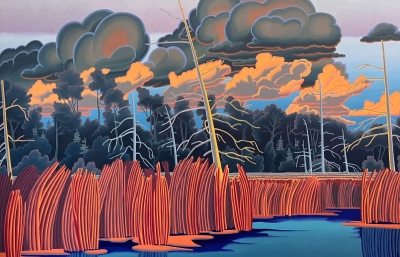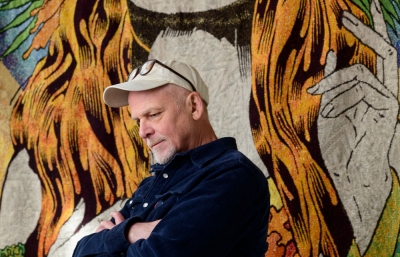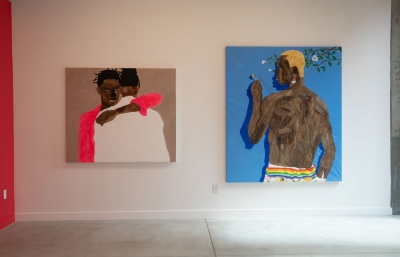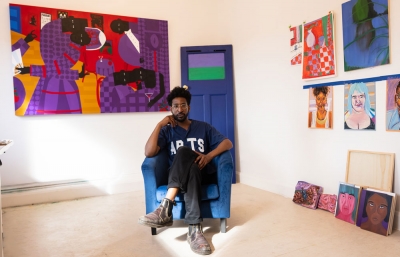We recently got an opportunity to have a close look at the new body of paintings and works on paper that Javier Ruiz, prepared for his upcoming solo exhibition which is opening on July 1st at a pop-up location in Amsterdam Noord. Curated by Gabriel Rolt from The Curator's Room, Wax and Wane will be the artist's first solo presentation in his adopted hometown following the recent, successful solo presentation in Spain.
Starting from his own mood as the emotional foundation of the work, Ruiz proceeds to construct his believable yet unusual scenes which are almost exclusively set in vast natural landscapes reminiscent of Andalusian scenery. Channeling his own frame of mind at the given moment he is deciding between a generally darkened atmosphere and a more open, light imbued setting and continuing to assemble his visuals from there. By collaging images from his archives, photos from the Internet, and imaginary elements, he is manufacturing fictitious scenes that are permeated with a sense of mystery and melancholy while evoking the elements of Renaissance or Baroque archetypes. Although exclusively dominated by human protagonists referenced from found photographs and artist's life, the paintings are usually exceptionally static, depicting a moment of almost eerie stillness. Inside such a suspended ambiance, the Amsterdam-based artist places subtle keys which relate to a range of intense emotions from sadness, over longing, to love, empathy, all the way to apathy or anxiety.
Rendered through a fastidious and delicate brushwork, both the protagonists and their surroundings are elevated above the flatness of the canvas and attributed with physical qualities. The coarse textures of the rocks or desolated grounds are complementing the rugged faces and other body parts of the portrayed subjects. Adding to the general ambiance of the image, these exceptional surfaces are also sensitive to the light and are changing the overall appearance of the work with different angles of looking at it. Comprising such emotional clues from the numb facial expressions, over downcast compositions and postures, to vibrant floral assemblages and bright open spaces, although frozen in time there is a notable tension in these visuals. The combination of these elements constructs bewildering scenes that are taking place in an idyllic, monumentally theatrical setting. Attributing the viewer with a spectator role, Ruiz keeps the suspension by never delivering the "missing" parts of the likely intense narrative behind his imagery. —Sasha Bogojev




















